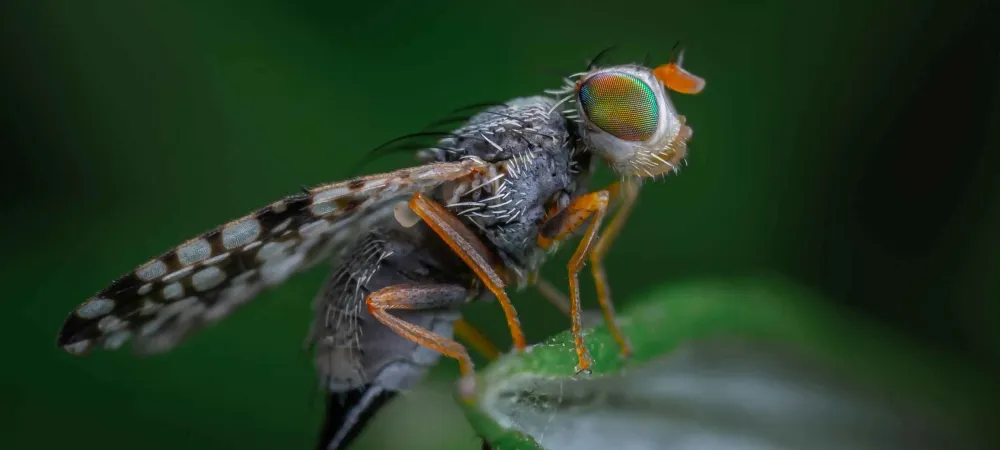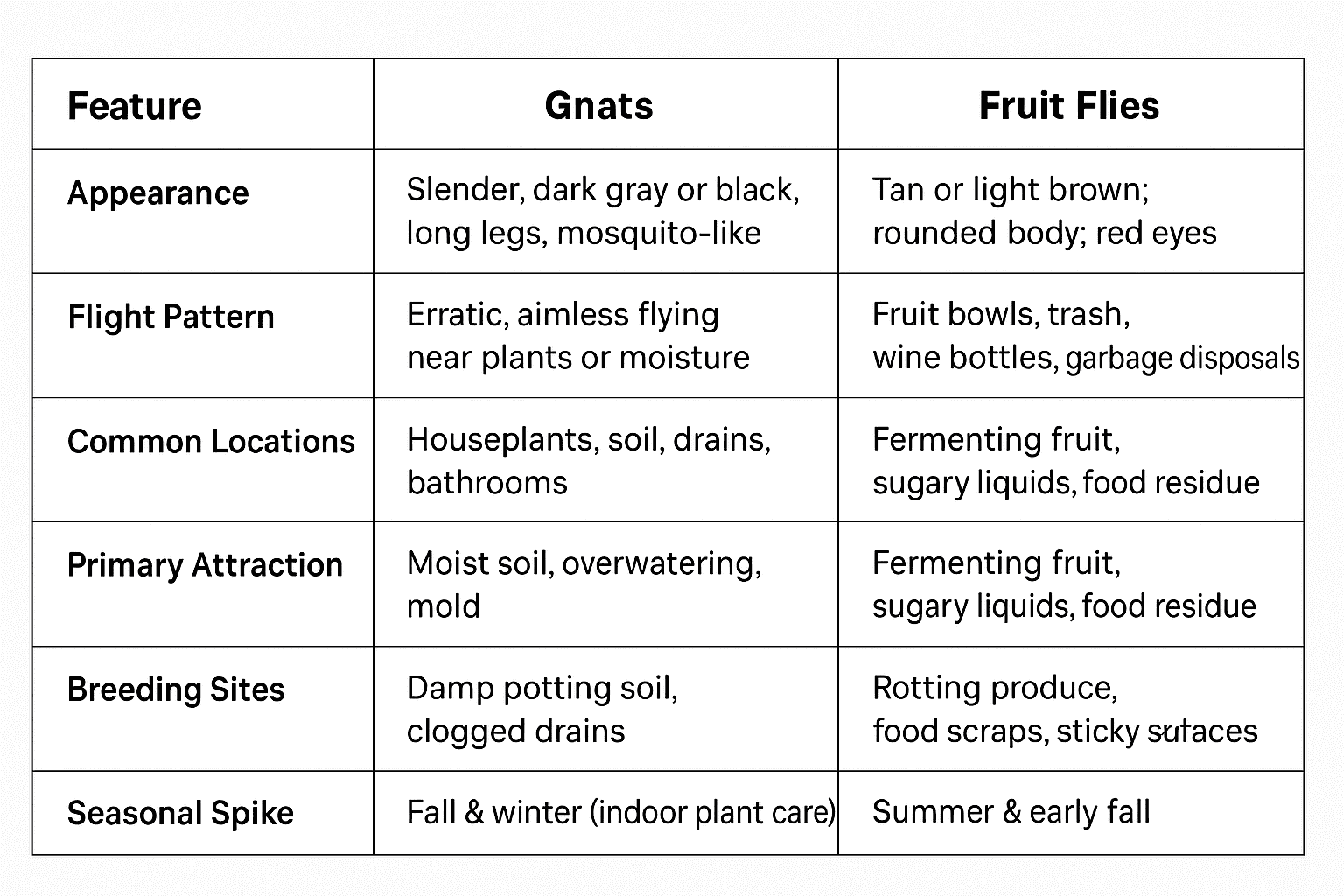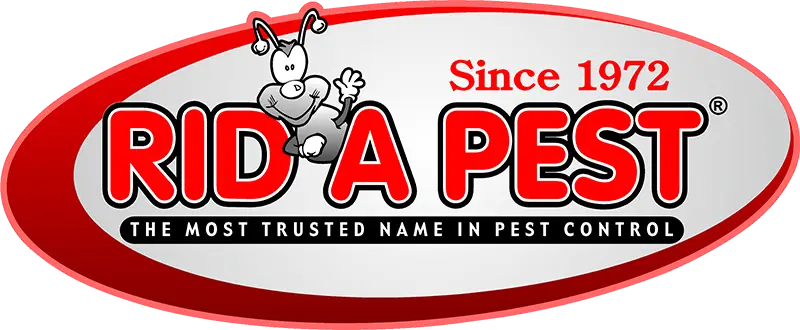Gnats vs. Fruit Flies

Table of Contents
Tiny flying bugs in your kitchen or around houseplants can be a serious annoyance—but are they gnats or fruit flies? Though often confused, these pests are quite different in how they behave, where they breed, and how you need to deal with them. Knowing which one you’re dealing with is the first step to getting rid of them for good.
This guide breaks down the differences between gnats and fruit flies, explains where they come from, and outlines the best ways to eliminate each one.
Key Differences

How to Tell the Difference
At a glance, gnats and fruit flies can look similar. But with a closer look and a little observation, there are clear differences:
- Fruit flies are tan or brown with red eyes, a rounded body, and slow, hovering flight. They’re most often found near fruit bowls, garbage disposals, wine bottles, or sugary spills.
- Gnats are darker—usually gray or black—with long legs and slender bodies. They look more like tiny mosquitoes and tend to fly in erratic patterns. Gnats are commonly seen near damp soil, houseplants, or drains.
If you notice bugs lingering around food and fermenting items, you’re likely dealing with fruit flies. If they’re clustered near soil or moisture, gnats are more likely the culprit.
Where Do They Come From?
Both pests are drawn to organic material and moisture, but they originate from different sources in the home.
- Fruit flies come from fermenting produce, spilled juice, dirty recycling bins, or rotting food in drains and garbage disposals. They lay eggs near moist, sugary surfaces.
- Gnats often come from damp indoor soil, overwatered houseplants, clogged drains, or moldy areas. Fungus gnats, in particular, lay eggs in moist potting soil.
In North Carolina, high humidity and warm temperatures—especially from spring through early fall—create ideal conditions for both gnats and fruit flies to thrive indoors. Even short periods of overwatering or poor air circulation can trigger activity. The state's long growing season also means homeowners are frequently bringing in fresh produce, which may carry fruit fly eggs if not properly washed.
Are Gnats or Fruit Flies Dangerous?
While neither pest is known to bite, they can still pose minor risks:
- Fruit flies can carry bacteria from decaying food or trash onto surfaces or fresh produce. This makes them a concern in kitchens or food prep areas.
- Gnats, particularly fungus gnats, can damage houseplants by feeding on roots. In large numbers, they may also contribute to mold growth or signal excessive indoor moisture.
In short, they’re more of a hygiene issue than a health hazard—but they shouldn’t be ignored.
How to Get Rid of Gnats
To eliminate gnats, focus on reducing moisture and cutting off their breeding grounds:
- Let houseplant soil dry out between waterings. Consider bottom-watering to avoid surface moisture.
- Remove dead leaves or organic debris from pots.
- Flush drains with a mixture of boiling water and vinegar or use a drain-cleaning product to remove buildup.
- Place sticky traps near plants or drains to monitor activity.
- Switch to sand or gravel on top of plant soil to discourage egg-laying.
Fungus gnats are especially common in North Carolina homes during fall and winter, when outdoor plants are brought inside and heating systems keep potting soil warm. During these months, it’s especially important to monitor soil moisture levels and plant health closely.
How to Get Rid of Fruit Flies
Fruit flies are easier to lure and trap, but sanitation is essential:
- Throw away overripe or rotting produce immediately.
- Clean your sink drain, garbage disposal, and trash can with disinfectant.
- Use fruit fly traps: You can make one with apple cider vinegar and dish soap in a small bowl, covered with plastic wrap and poked with holes.
- Rinse out recyclables before storing them indoors.
- Wipe down countertops and mop up any spills, especially sugary liquids.
Seasonal Gnat and Fruit Fly Surges in North Carolina
Thanks to the state's humid climate and extended growing season, both gnats and fruit flies tend to be more active in North Carolina from late spring through early fall. Homes near wooded areas, compost piles, or gardens may experience more frequent activity during these months. Preventive habits—like proper storage, cleaning, and moisture control—are especially important throughout the warmer parts of the year.
